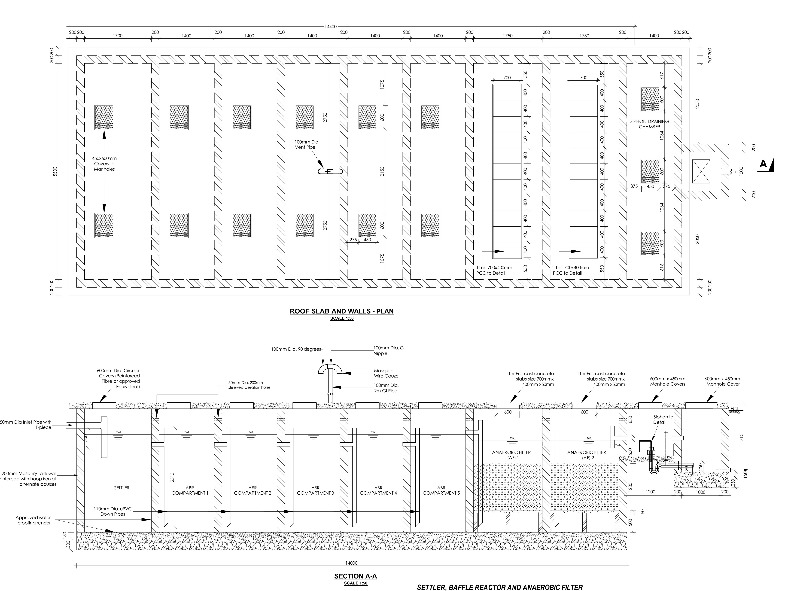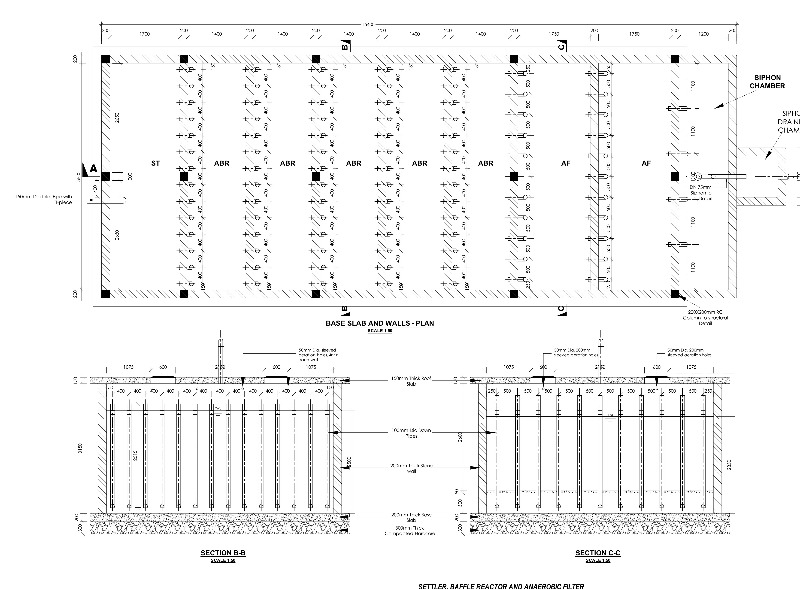- Forum
- categories
- Sanitation systems
- Faecal sludge management (FSM)
- Faecal sludge treatment technologies
- FSM Pilot Project in south Brazil - to design and build septage treatment plants
FSM Pilot Project in south Brazil - to design and build septage treatment plants
7262 views
- vitorhfdiogo
-
 Topic Author
Topic Author- Environmental Engineer - Wastewater Projects - CORSAN
Less- Posts: 11
- Likes received: 3
Dear Alexandra
Thank you so much for your reply!
You surely did answer all my questions
Your work is really inspiring.
If you ever have some other results I would really appreciate if you could share with us!
Best regards
Vitor
Thank you so much for your reply!
You surely did answer all my questions
Your work is really inspiring.
If you ever have some other results I would really appreciate if you could share with us!
Best regards
Vitor
Please Log in to join the conversation.
You need to login to reply- AlexandraDubois
-

- Administrator
- Technical advisor specialized in water, sanitation and hygiene. I work for GIZ since 2012 and have gathered experience in the sub-Saharan region mainly. Since January 2022, I work as an advisor for the “Water Policy Sector Programme - Innovations for Resilience” in Bonn and I am part of the SuSanA secretariat.
Less- Posts: 66
- Karma: 6
- Likes received: 46
Dear Vitor
Unfortunately we did not do any tests on nutrients and pathogens. Those tests will be carried out by the Water Utilities which are in charge of the maintenance of the plant. I will share as soon as theses results are available. There is quite a large range in terms of faecal sludge quality, it is possible that the one we have tested was on the low end of the scale, knowing that the tested DTF is located in a medium town close to Nairobi where the ratio septic tanks/pit latrines is higher than in small towns. We did not run any tests on the faecal sludge quality before designing the DTF, but used figures from literature and previous experience from the experts in charge of the design. The DTF is a facility which is paired to the construction of pour flush toilets (with septic tank), therefore the sludge quality which was considered is not the one for the thick (almost waterless) sludge from pit latrines. I hope I managed to answer all your question.
Best regards
Alexandra
Unfortunately we did not do any tests on nutrients and pathogens. Those tests will be carried out by the Water Utilities which are in charge of the maintenance of the plant. I will share as soon as theses results are available. There is quite a large range in terms of faecal sludge quality, it is possible that the one we have tested was on the low end of the scale, knowing that the tested DTF is located in a medium town close to Nairobi where the ratio septic tanks/pit latrines is higher than in small towns. We did not run any tests on the faecal sludge quality before designing the DTF, but used figures from literature and previous experience from the experts in charge of the design. The DTF is a facility which is paired to the construction of pour flush toilets (with septic tank), therefore the sludge quality which was considered is not the one for the thick (almost waterless) sludge from pit latrines. I hope I managed to answer all your question.
Best regards
Alexandra
Alexandra Dubois
Technical Advisor
Sector Programme Water Policy – Innovations for Resilience
Division Climate Change, Environment & Infrastructure
GIZ │Deutsche Gesellschaft für
Internationale Zusammenarbeit (GIZ) GmbH
Friedrich-Ebert-Allee 32
53113 Bonn, Germany
Technical Advisor
Sector Programme Water Policy – Innovations for Resilience
Division Climate Change, Environment & Infrastructure
GIZ │Deutsche Gesellschaft für
Internationale Zusammenarbeit (GIZ) GmbH
Friedrich-Ebert-Allee 32
53113 Bonn, Germany
The following user(s) like this post: Elisabeth
Please Log in to join the conversation.
You need to login to reply- vitorhfdiogo
-
 Topic Author
Topic Author- Environmental Engineer - Wastewater Projects - CORSAN
Less- Posts: 11
- Likes received: 3
Hi Alexandra!
Thanks a lot for your reply! Certainly did help a lot!
Have you done any tests on nutrients or pathogens?
Looking at the results, do you think the raw sludge was less concentrated than expected? Did you run tests on the faecal sludge before designing the DTF? I would expect a higher BOD and COD, based on the literature (and some of our results)...
Congratulations on your great work!
Thanks a lot for your reply! Certainly did help a lot!
Have you done any tests on nutrients or pathogens?
Looking at the results, do you think the raw sludge was less concentrated than expected? Did you run tests on the faecal sludge before designing the DTF? I would expect a higher BOD and COD, based on the literature (and some of our results)...
Congratulations on your great work!
Please Log in to join the conversation.
You need to login to reply- AlexandraDubois
-

- Administrator
- Technical advisor specialized in water, sanitation and hygiene. I work for GIZ since 2012 and have gathered experience in the sub-Saharan region mainly. Since January 2022, I work as an advisor for the “Water Policy Sector Programme - Innovations for Resilience” in Bonn and I am part of the SuSanA secretariat.
Less- Posts: 66
- Karma: 6
- Likes received: 46
Dear Vitor
In Kenya we are also working on faecal sludge management and we have implemented a standardized treatment plant for faecal sludge (called DTF: Decentralised Treatment Facility) in different towns. If you want to know more about the initial DTF follow this link .
We are currently revising the design in order to increase the capacity to 50m3/day and improve the performance. The faecal sludge is released (from vacuum trucks) into a channel with a grit trap pocket and 2 screens (coarse and fine) and is either released in a balancing tank to control the flow rate (if the faecal sludge comes from a septic tank and has a high water content) or in a Sludge Drying Bed (if the sludge is thicker). The effluent (coming from the balancing tank and/or the SDB) is then directed to the next module which is a combination of a settling tank, an anaerobic batch reactor (ABR) and 2 anaerobic filters. With this kind of system, you are not bothered by the smell as it is evacuated through a central 2m high vent pipe. The performance of such system is expected to be good in terms of BOD and COD removal (I can’t say anything about nutrients removal though). See the effluent quality test results in the previous link .
We are still consolidating the technical drawings, but I can show you the first draft so you have a better idea of the general design.
After the anaerobic filter, the effluent is collected into a siphon chamber and will be released intermittently (1.5m3 flush every 30-40 minutes) into a Vertical Flow Constructed Wetland. In your case, if you don’t want to use a constructed wetland, you can skip the siphon stage and add a shallow pond, since the quality of the effluent is likely to be sufficient for an aerobic pond.
I hope I managed to help a bit.
Greetings from Nairobi
In Kenya we are also working on faecal sludge management and we have implemented a standardized treatment plant for faecal sludge (called DTF: Decentralised Treatment Facility) in different towns. If you want to know more about the initial DTF follow this link .
We are currently revising the design in order to increase the capacity to 50m3/day and improve the performance. The faecal sludge is released (from vacuum trucks) into a channel with a grit trap pocket and 2 screens (coarse and fine) and is either released in a balancing tank to control the flow rate (if the faecal sludge comes from a septic tank and has a high water content) or in a Sludge Drying Bed (if the sludge is thicker). The effluent (coming from the balancing tank and/or the SDB) is then directed to the next module which is a combination of a settling tank, an anaerobic batch reactor (ABR) and 2 anaerobic filters. With this kind of system, you are not bothered by the smell as it is evacuated through a central 2m high vent pipe. The performance of such system is expected to be good in terms of BOD and COD removal (I can’t say anything about nutrients removal though). See the effluent quality test results in the previous link .
We are still consolidating the technical drawings, but I can show you the first draft so you have a better idea of the general design.
After the anaerobic filter, the effluent is collected into a siphon chamber and will be released intermittently (1.5m3 flush every 30-40 minutes) into a Vertical Flow Constructed Wetland. In your case, if you don’t want to use a constructed wetland, you can skip the siphon stage and add a shallow pond, since the quality of the effluent is likely to be sufficient for an aerobic pond.
I hope I managed to help a bit.
Greetings from Nairobi
Alexandra Dubois
Technical Advisor
Sector Programme Water Policy – Innovations for Resilience
Division Climate Change, Environment & Infrastructure
GIZ │Deutsche Gesellschaft für
Internationale Zusammenarbeit (GIZ) GmbH
Friedrich-Ebert-Allee 32
53113 Bonn, Germany
Technical Advisor
Sector Programme Water Policy – Innovations for Resilience
Division Climate Change, Environment & Infrastructure
GIZ │Deutsche Gesellschaft für
Internationale Zusammenarbeit (GIZ) GmbH
Friedrich-Ebert-Allee 32
53113 Bonn, Germany
Attachments:
-
 ST-ABR-2.jpg
(Filesize: 115KB)
ST-ABR-2.jpg
(Filesize: 115KB)
-
 ST-ABR-1.jpg
(Filesize: 118KB)
ST-ABR-1.jpg
(Filesize: 118KB)
Please Log in to join the conversation.
You need to login to reply- vitorhfdiogo
-
 Topic Author
Topic Author- Environmental Engineer - Wastewater Projects - CORSAN
Less- Posts: 11
- Likes received: 3
Hi everyone!
Thanks for your replies!
Cecilia, congratulations on the event! I watched it online and it was really interesting. I hope next time we can participate.
Mr. Antonio, thanks for your report! I talked to my colleagues about it and we are reconsidering the possibility of using an anaerobic pond as a first step after screening and grit removal (at least as an alternative).
But then I was doing some research on the subject and went to the Faecal Sludge Management book (Strande et al. 2014) and it says:
"Typically, due to the high ammonia concentration and high organic loads and solid content, treating solely FS in
WSPs is not recommended (Strauss et al., 2000)."
And the paper they quoted brings the case of the Achimota treatment plant, in Ghana, that all four ponds went anaerobic even though the others were designed to work as facultative pond, and it was likely due to high ammonia concentrations. Also, no additional BOD removal was identified in these ponds.
Even though the ammonia concentrations that we have measured here are much lower than the 1000mg/L that they reported, we worried that something like that could happen. Do you (or does anyone) know of any design criteria to avoid that from happening?
Maybe a settling/thickening tank would be a better choice? or both?
Thanks for your replies!
Cecilia, congratulations on the event! I watched it online and it was really interesting. I hope next time we can participate.
Mr. Antonio, thanks for your report! I talked to my colleagues about it and we are reconsidering the possibility of using an anaerobic pond as a first step after screening and grit removal (at least as an alternative).
But then I was doing some research on the subject and went to the Faecal Sludge Management book (Strande et al. 2014) and it says:
"Typically, due to the high ammonia concentration and high organic loads and solid content, treating solely FS in
WSPs is not recommended (Strauss et al., 2000)."
And the paper they quoted brings the case of the Achimota treatment plant, in Ghana, that all four ponds went anaerobic even though the others were designed to work as facultative pond, and it was likely due to high ammonia concentrations. Also, no additional BOD removal was identified in these ponds.
Even though the ammonia concentrations that we have measured here are much lower than the 1000mg/L that they reported, we worried that something like that could happen. Do you (or does anyone) know of any design criteria to avoid that from happening?
Maybe a settling/thickening tank would be a better choice? or both?
The following user(s) like this post: Deependra
Please Log in to join the conversation.
You need to login to reply- jlmantonio
-
Less
- Posts: 1
- Likes received: 1
Re: FSM Pilot Project in south Brazil
Hi Everyone,
Many people have visited the Dumaguete Septage treatment plant for the past seven years and I have yet to hear comments that the anaerobic ponds smell or are odorous. Perhaps appropriate design, maintenance and the presence of trees surrounding the anaerobic ponds help.
Good to hear from and your great work.
J.M. Antonio
Many people have visited the Dumaguete Septage treatment plant for the past seven years and I have yet to hear comments that the anaerobic ponds smell or are odorous. Perhaps appropriate design, maintenance and the presence of trees surrounding the anaerobic ponds help.
Good to hear from and your great work.
J.M. Antonio
The following user(s) like this post: vitorhfdiogo
Please Log in to join the conversation.
You need to login to reply
Dear Vitor,
Thank you very much for sharing with us this initiative. These are great news! It is great to hear that the SuSanA community provided you with the technical references for your work and also that onsite sanitation systems are being considered in Brazil.
On Saturday, 17th March, we will be hosting the 25th SuSanA Meeting in Brasilia. Will you be around? If not, I invite you and your colleagues to join us via our live stream (or to watch the recording):
Here you can find the meeting agenda and further information: www.susana.org/en/news-and-events/sanita...ana-meeting-brasilia
Looking forward to staying in touch with you! All the very best for your work!
Um abraco,
Cecilia.
Thank you very much for sharing with us this initiative. These are great news! It is great to hear that the SuSanA community provided you with the technical references for your work and also that onsite sanitation systems are being considered in Brazil.
On Saturday, 17th March, we will be hosting the 25th SuSanA Meeting in Brasilia. Will you be around? If not, I invite you and your colleagues to join us via our live stream (or to watch the recording):
Here you can find the meeting agenda and further information: www.susana.org/en/news-and-events/sanita...ana-meeting-brasilia
Looking forward to staying in touch with you! All the very best for your work!
Um abraco,
Cecilia.
Programme Officer at GIZ - Sustainable Sanitation Programme
and the SuSanA Secretariat
and the SuSanA Secretariat
Please Log in to join the conversation.
You need to login to reply- vitorhfdiogo
-
 Topic Author
Topic Author- Environmental Engineer - Wastewater Projects - CORSAN
Less- Posts: 11
- Likes received: 3
Hi everyone!
I work at the Water and Sanitation company of the State of Rio Grande do Sul (CORSAN), and we are currently working on a septage management program, to adress the lack of sanitation specially in small cities in rural areas. Since I have gathered many information from this forum, I would now like to share with you our work as we go, and also be able to exchange information and experiences, so feel free to ask me anything, criticize or make suggestions! We would really appreciate your opinion!
Right now the part of the project that I am working on (there are many aspects of it that are being done by different departments) is to design and build septage treatment plants in cities where on-site sanitation systems are a good choice.
Then, we will implement a scheduled desludging program, charging users monthly along with the water tariff.
So far, we have already started with a pilot project of desludging of septic tanks and disposal of that sludge in drying beds of a existing wastewater treatment plant, mostly to gather data of desludging times and charachteristics, and also to subsidize the project of the Septage Treatment Plant. The drying bed worked really well, better than expected, and we are waiting for the results of the analysis of the raw sludge and the leachate.
Our main idea of a STP is to use a drying bed to dewater the sludge, then treat the leachate in a facultative and a maturation pond, and then dispose the effluent on the soil. The dried sludge we hope to compost with sawdust or whatever carbon source is available where we build it. We visited a private desludging company that had a similar treatment plant flow and it worked quite well.
We have been studying some alternatives, but for the first try we are looking for something more easy to operate and already present on the day-to-day of the company. I read a lot here about planted drying beds, and i hope someday we can use some too, but unfortunately we have had some issues with constructed wetlands before so there's some resistance. But maybe we can do both in the future. Since at this point we are talking about rural areas, land availability is not a problem (so far).
We really liked to read and watch videos about the STP of Dumaguete, in the Phillipines, that seems to be a great example of similar capacity, but there they used first a anaerobic pond to dispose the septage, and then they remove the sludge from the pond to dewater in the drying beds. We were afraid that it could be harder that way, and since anaerobic ponds are a big source of odors too, so we decided to do this other way.
Right now we are talking to some municipalities in order to acquire the land we need. We hope, in this first project, to be able to receive about 80m³/day of raw septage.
As we go, i will upload some pictures of what we have been doing, as well as new informations.
Thank you for your attention!
I work at the Water and Sanitation company of the State of Rio Grande do Sul (CORSAN), and we are currently working on a septage management program, to adress the lack of sanitation specially in small cities in rural areas. Since I have gathered many information from this forum, I would now like to share with you our work as we go, and also be able to exchange information and experiences, so feel free to ask me anything, criticize or make suggestions! We would really appreciate your opinion!
Right now the part of the project that I am working on (there are many aspects of it that are being done by different departments) is to design and build septage treatment plants in cities where on-site sanitation systems are a good choice.
Then, we will implement a scheduled desludging program, charging users monthly along with the water tariff.
So far, we have already started with a pilot project of desludging of septic tanks and disposal of that sludge in drying beds of a existing wastewater treatment plant, mostly to gather data of desludging times and charachteristics, and also to subsidize the project of the Septage Treatment Plant. The drying bed worked really well, better than expected, and we are waiting for the results of the analysis of the raw sludge and the leachate.
Our main idea of a STP is to use a drying bed to dewater the sludge, then treat the leachate in a facultative and a maturation pond, and then dispose the effluent on the soil. The dried sludge we hope to compost with sawdust or whatever carbon source is available where we build it. We visited a private desludging company that had a similar treatment plant flow and it worked quite well.
We have been studying some alternatives, but for the first try we are looking for something more easy to operate and already present on the day-to-day of the company. I read a lot here about planted drying beds, and i hope someday we can use some too, but unfortunately we have had some issues with constructed wetlands before so there's some resistance. But maybe we can do both in the future. Since at this point we are talking about rural areas, land availability is not a problem (so far).
We really liked to read and watch videos about the STP of Dumaguete, in the Phillipines, that seems to be a great example of similar capacity, but there they used first a anaerobic pond to dispose the septage, and then they remove the sludge from the pond to dewater in the drying beds. We were afraid that it could be harder that way, and since anaerobic ponds are a big source of odors too, so we decided to do this other way.
Right now we are talking to some municipalities in order to acquire the land we need. We hope, in this first project, to be able to receive about 80m³/day of raw septage.
As we go, i will upload some pictures of what we have been doing, as well as new informations.
Thank you for your attention!
Please Log in to join the conversation.
You need to login to reply
Share this thread:
- Forum
- categories
- Sanitation systems
- Faecal sludge management (FSM)
- Faecal sludge treatment technologies
- FSM Pilot Project in south Brazil - to design and build septage treatment plants
Recently active users. Who else has been active?
Time to create page: 0.175 seconds







